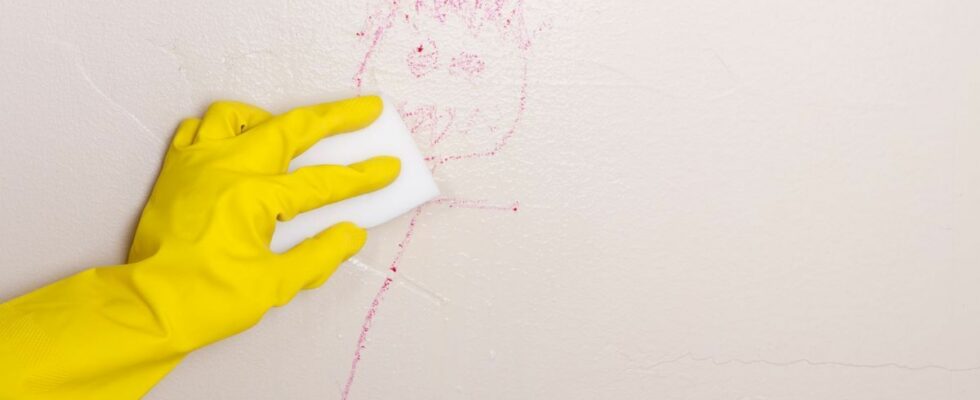Published on
Updated
Reading 2 min.
Have you heard of magic sponges? These white foam rectangles, made of melamine, allow you to clean different surfaces without too much effort. However, scientists are calling for this accessory to be stopped. Here’s why.
To clean walls or white sneakers, magic sponges work miracles. They get rid of the most stubborn marks and are very easy to use, because of their abrasive side, a bit like sandpaper. However, scientists warn against using these sponges for cleaning.
Magic sponges pose a health hazard
The melamine that makes up the magic sponges is actually made up of polymelamine-formaldehyde polymers, assembled in the form of a foam rectangle. This is why the magic sponges degrade easily during use. As it wears out, the magic sponge breaks down into smaller pieces that can release microplastics.
Chinese scientists from Nanjing University have been studying the path that sponge residues take in our environment. They have been found in sewer systems, also polluting rivers, seas and oceans. These fibres can also be consumed by wildlife and end up on our plates.
This finding was valid for the three brands tested by the researchers, with one nuance however: sponges made from denser foam wore out more slowly and produced fewer microplastics than less dense sponges.
Microplastic pollution, a worrying subject
To measure the impact of this pollution, the team of researchers determined the amount of fibers lost by a sponge. They therefore estimated that a single sponge releases about 6.5 million fibers per gram of used sponge and assumed that all sponges sold are worn out by 10%, on average.
To get a rough idea of how many microplastics could be released per month, they looked at the monthly sales of the giant Amazon for the month of August 2023. Based on these figures, the scientists calculated that 1,550 billion microplastics from melamine sponges could be released into nature each month. This is a partial figure because sales from other networks were not taken into account in these estimates. Magic sponges are therefore indeed contributing to the pollution of our environment by microplastics.
To combat this pollution which affects many species, particularly fish, before ending up on our plates, researchers are proposing three avenues:
- The manufacture of denser and more wear-resistant sponges by manufacturers;
- A change in consumer habits, to encourage them to opt for natural cleaning products that do not use plastics;
- The installation of filtration systems to capture released microplastic fibres, either at home or in treatment plants.
The impact of this plastic pollution on human health is the subject of much research, especially since these microparticles are found in placental tissues, in human hearts, in testicles, in blood and in sperm.
